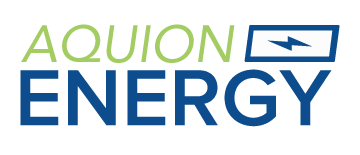The Future of Industrial Efficiency: How Energy Storage and OEE Go Hand in Hand
As part of an industrial and office drive toward greater efficiency, many firms are taking steps to improve their energy usage. These are key features of Industry 4.0 efforts, a broad set of concepts to improve business and factory efficiency.
As well as more efficient hardware, installing solar banks on factory roofs is a well-used strategy. But, firms can also generate power from wind energy above car parks or other open areas, and other forms like water power if they’re suitably located. This not only provides power flexibility but can boost a company’s ESG credentials and provide a competitive advantage.
Companies can store energy to reduce their bill, using stored power at peak times, or return it to the grid to generate additional income. Doing that through “net metering” or “solar export programs” can help offset the cost of energy system installation and deliver on industrial efficiency goals for the business.
The Power of Industry 4.0
Industry 4.0 is a German government concept that is now a decade old. One that heralded the rise of the Fourth Industrial Revolution. It has been broadly applied across many business and manufacturing strategies by the likes of Gartner and McKinsey. It focuses on the rise of factory automation, big data, 3D printing, and smart power to deliver major efficiencies.
In Industry 4.0 factories, work goes beyond traditional just-in-time methodologies, with automated systems ensuring maintenance happens to minimize any disruption, while automated supply chains and ordering reduce costs and boost efficiencies across the business.
For companies considering their first steps into efficient production, the government’s EERE’s Buildings and Industry Office (B&I) has plenty of information.
Maximise the Power of Overall Equipment Effectiveness

However energy is used and stored, ensuring a factory or production plant operates at overall equipment effectiveness (OEE) is key to using it efficiently.
As part of sustainability goals, ensuring your factory equipment uses power through OEE measurements is a vital performance indicator. World-class OEE helps the business measure both the efficiency and effectiveness of manufacturing processes and can identify process weaknesses.
As part of Industry 4.0 efforts, using energy storage systems improves OEE results by reducing downtime, boosting equipment performance, and ensuring a consistent energy supply. All of which leads to improved productivity, energy costs, and sustainability.
They also help as part of clean energy efforts. As power solutions and battery technology become more efficient and modular, the benefits of business energy management will improve over time, helping meet clean energy goals.
Using an OEE system to measure equipment and process performance, availability, quality, production rate, and quality rate provides key insights and trends into productivity.
The basic metrics include:
- Process rate: measuring the speed at which a machine processes units.
- Availability: Tracks machine availability across each factory production line or unit. Also identifies failure rates.
- Quality: a figure based on the ratio of good parts produced compared to total output
- Production availability: shows machine or product line availability and failure rates
Whenever there is a drop in any of these figures, either through power failures, supply chain and logistical problems, operator error, and machine speed reductions, perhaps due to maintenance, managers and operators can identify the cause and rectify it.
Poor power availability is one reason for companies to invest in renewable and off-grid power solutions and energy storage. As tariff power battles rage, having access to your own energy supplies may become a critical advantage over companies relying on an increasingly stretched grid at the mercy of natural disasters and economic sabotage.
The Connected Business and the Smart Factory
Businesses cannot afford for the lights to go out in competitive markets, and as factories get older, a gradual decline in performance is expected. Businesses will have to decide whether to install a replacement facility, perhaps building at a location with strong tax and progressive power incentives.
Some may look to outsource production, but in an increasingly chaotic political and global business environment, many will look to maximize home advantage and modern integrated IT and manufacturing benefits.
Through the use of technology like Internet of Things (IoT) sensors to manage power and production efficiency, even small factories can make large savings, and modern power-efficient factory equipment can reduce the amount of electricity consumed during production runs.
Manufacturing system features including variable speed drives (VSDs), high-efficiency motors, smart controls and automation, plus energy recovery systems all help factories operate efficiently and avoid waste.
Whatever the leadership decisions, factory production must align to business goals and financial needs, with industrial efficiency a key metric. Industry 4.0 factories provide the data to support major decisions. Another benefit is building up a company’s Environmental, Social, and Governance (ESG) portfolio.
While they may not be politically popular concepts, they help attract investment, and younger workers with a strong environmental sense are more likely to work for companies showing a progressive approach to business.
By integrating Industry 4.0 technology, smart devices, energy storage systems, and a fine-grained approach to reporting, manufacturing processes can contribute to a more sustainable and efficient production environment. And businesses are better placed to adapt to changing markets, uncertain supply chains, and other challenges across the industrial landscape.

